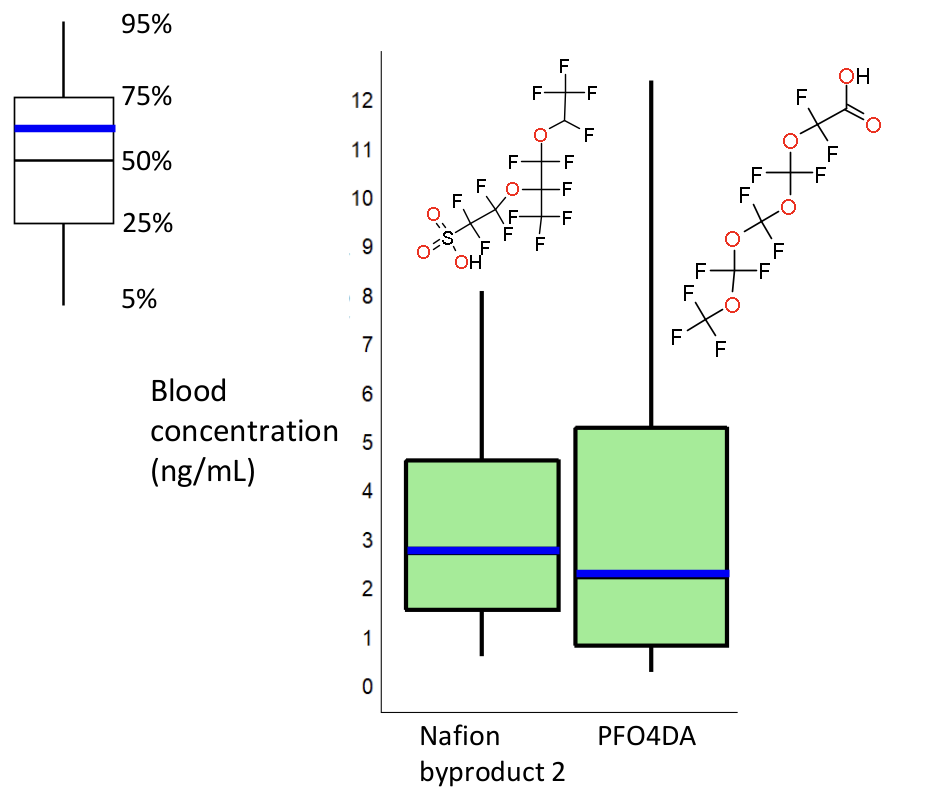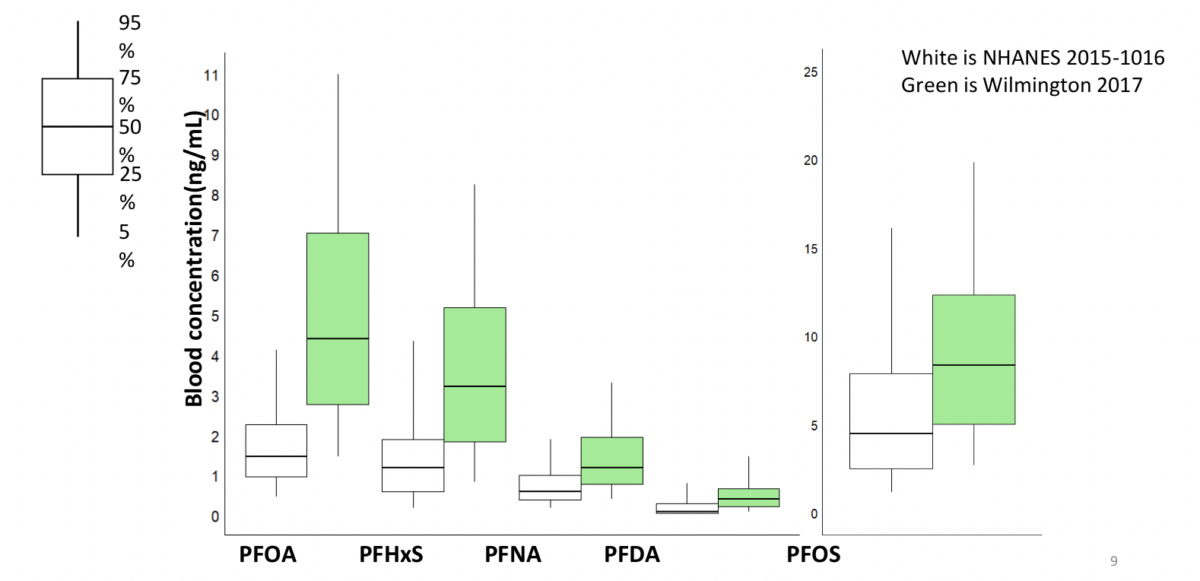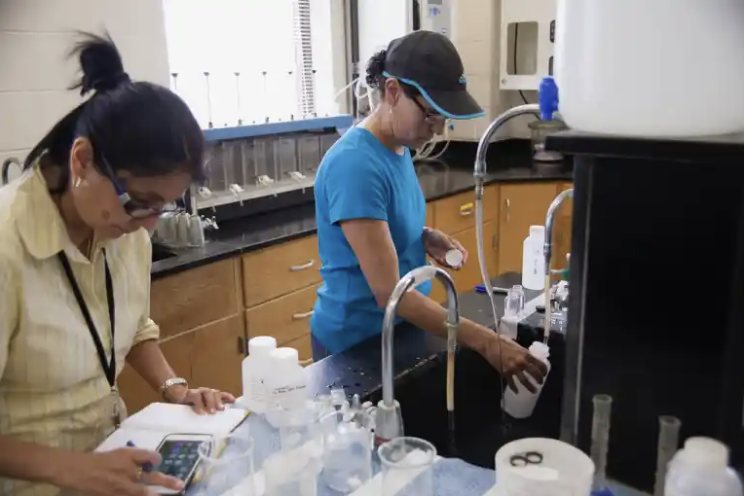Our Findings
Our Findings, So Far.
Read below to see what we’ve discovered in our research so far.
To get a better understanding of the evolution of the GenX Study, please refer to our “Study Overview” page.
Human Exposure
In November 2017 and May 2018, we collected blood samples from 344 people in Wilmington and analyzed the blood samples for over 20 different PFAS.

What We Detected
While we did not detect GenX, we did find three brand new PFAS in the blood of almost everyone.
The chemicals we found include Nafion byproduct 2, PFO4DoA, and PFO5DoA. These are part of a PFAS family called “fluoroethers”. When we looked for these chemicals in blood samples collected 6 months later, the levels of the fluoroethers had dropped dramatically. This change indicates that these chemicals (Nafion byproduct 2, PFO4DoA, and PFO5DoA) are relatively short lived.
Legacy PFAS in Blood
We also looked for other PFAS chemicals that are widely found in people. These chemicals are often referred to as “Legacy PFAS.” In our search this includes: PFOA, PFOS, PFHxS, and PFNA. We found that the levels of the legacy PFAS were much higher in people in Wilmington than the US population.
The levels of these chemicals did not change in six months, indicating that they are not as short lived, lasting a lot longer than other chemicals we’ve found.

Human Health
We have started to evaluate how PFAS in blood may be associated with health effects. When we collected the blood for PFAS measurement, we also measured lipid levels, thyroid hormones, and a comprehensive metabolic panel.

PFAS and Health Outcomes
In our first paper on health outcomes, we saw that people with higher legacy PFAS had higher levels of non-HDL cholesterol, a type of cholesterol that does not change much whether or not you are fasting. These associations were higher in older people.
What does this mean?
Because PFAS levels and cholesterol levels were measured at the same time, we can not determine which came first: elevated PFAS or elevated cholesterol. Followup studies will allow us to learn more about how PFAS influences human health
